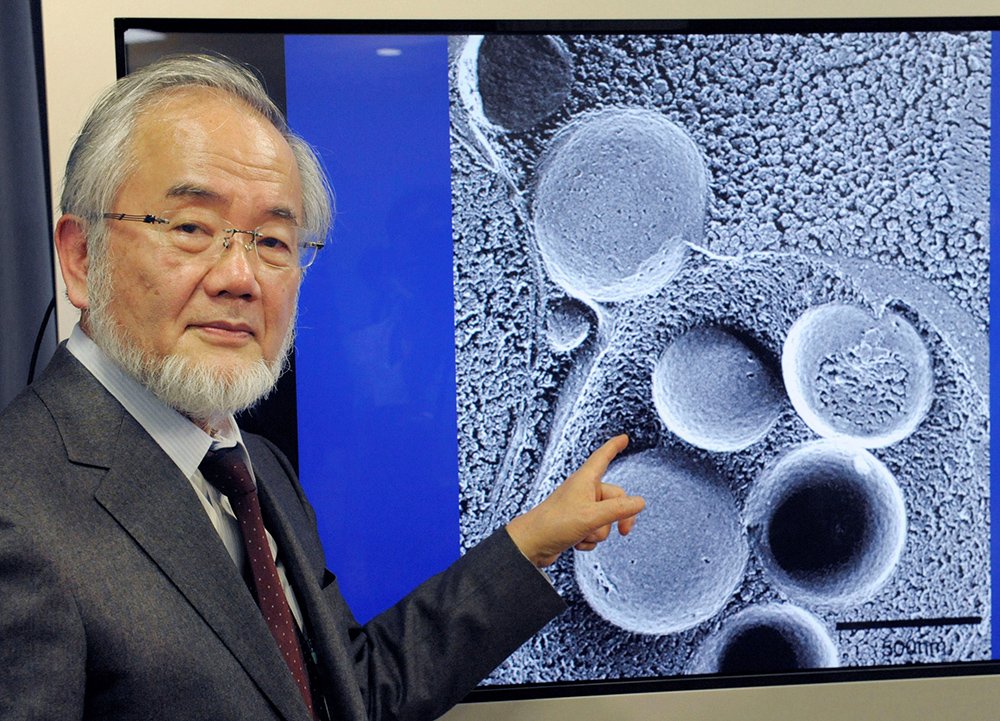Facts about cell death
Imbalance in the natural process of cell death in our bodies either wholly or partially causes over 50 different diseases, including cancer, Alzheimer's and rheumatism. This knowledge has lead to research into cell death becoming the most intensive field of research in the world today.
Glossary
Death receptor: Located on all cells and activates the cell death program inside the cell. The immune system often activates the death receptor of cells infected by a virus so that they die before the virus has time to proliferate.
Death ligands: Molecules that bind to the death receptor and initiate the cell death program.
Decoy death receptor: A death receptor that has no contact with a cascade of events under the cell surface. Used by cancer cells to diminish the effect of death ligands.
Death signal: Occurs when a death ligand binds to a death receptor.
Death genes: Genes that regulate cell death. The first to be detected were ced-3, ced-4 and ced-9 in the worm C. elegans. There are corresponding genes in humans, such as caspase-3, APAF-1 and bcl-2.
The most common types of cell death
Necrosis
Essentially applies to morbid cell death caused by factors outside the cell such as toxins, hypoxia, mechanical violence, heat, cold or radiation, but more recently researchers have also observed programmed necrosis. During necrosis, disruptions become so great that a number of processes inside the cell start to malfunction and finally the cell wall cannot remain intact and the cell collapses. The cell contents then leak into the surrounding tissue. The leaked contents cause an inflammation, which further damages adjacent tissue.
Apoptosis
Programmed cell death, usually caused by factors inside the cell but sometimes by external factors such as drugs. A genetic program is started which makes the cell shrink in a predictable way; the nucleus shrinks first, then fragments and the whole cell dissolves. The remaining parts are removed by macrophages or adjacent cells. Apoptosis does not cause any inflammation.
Autophagy
From the Greek, meaning "self-eating". The cell breaks down its own worn components by transporting them to lysosomes, which are like small stomachs in the cell, where they are consumed. Autophagy can function both as a cell killing mechanism and a cell saving mechanism. In the former process, the cell eats itself; in the latter, only the damaged components are eaten and replaced with new parts.
Mitotic catastrophe
This is what kills cancer cells after radiation or drug-induced DNA damage. The genetic damage in the cell nucleus cannot be repaired, cell division does not function and the cell collapses.
Anoikis
Only occurs in women's breasts after breastfeeding has ceased and the milk-producing cells are no longer required. They die through this mechanism.
Cell death diseases
The following are a number of diseases that are wholly or partly caused by imbalance in the cell death process.
Increased cell death
- Alzheimer's disease
- Huntington's disease
- Parkinson's disease
- Aplastic anaemia
- Heart attack
- Stroke
- Type I diabetes
- MS
- AIDS
Decreased cell death
- Cancer
- Atherosclerosis
- Systemic Lupus Erythematosus (SLE)
- Rheumatoid arthritis
- Osteoporosis
- Down's syndrome
Major breakthroughs in cell death research
1858: First definition of necrosis
The term necrosis was coined by the German doctor Rudolph Virchow, who is considered to be the father of modern medicine after he introduced a scientific approach and refuted the theory of the four body fluids. He described and named necrosis in his work.
1972: Apoptosis described
Apoptosis was presented by the Australian pathologist John F R Kerr, who observed a new type of cell death that went through two stages: first in the cell nucleus and then in the cytoplasm. He first called this shrinking necrosis, but he later named it apoptosis in 1972.
1985: Identification of death genes
The American researcher Robert Horvitz identified genes in the worm C. elegans that were responsible for programmed cell death. The human counterparts of these genes were later identified. Robert Horvitz was among the researchers who were given the Nobel Prize in physiology or medicine in 2002.
1989: Tumour suppressor gene found
The American researcher Bert Vogelstein showed that the gene TP53, which encodes the protein p53, was mutated in a number of different types of cancer. The P53 protein is known as the "guardian of the genome" because its function is to determine whether DNA damage should be repaired or if the cell should go into apoptosis.
1999: Autophagy and cancer linked
The American researcher Beth Levine showed that the autophagy-associated gene beclin-1 played a role in the inhibition of breast cancer cells, which has resulted in several substances that affect the autophagy process now being tested as potential drugs against cancer.
Sources: Boris Zhivotovsky, "Falling leaves: a survey of the history of apoptosis" Minerva Medica 2004, each researcher's work, Wikipedia, National Encyclopedia. The text was first published in Swedish in the magazine Medicinsk Vetenskap issue 2, 2014.
More reading

Yoshinori Ohsumi Nobel Prize Laureate 2016
In 2016 The Nobel Assembly at Karolinska Institutet decided to award the Nobel Prize in Physiology or Medicine to Yoshinori Ohsumi for his discoveries of mechanisms for autophagy.
